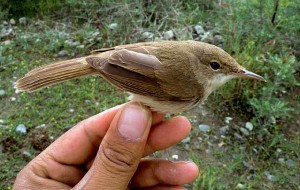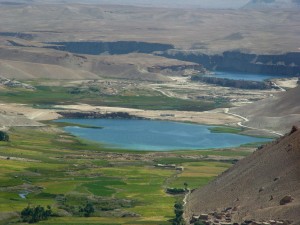How can this unassuming little bird help preserve local culture and keep the peace in a remote corner of Afghanistan?
April 10th, 2010
The Global Exchange group and I met with Dr. David Lawson of the World Conservation Society (WCS) in their small office here in Kabul. I was surprised to learn that conservation here in Afghanistan has wide ranging effects beyond just saving wildlife. It’s not a matter of choosing to help cute fuzzy critters over people. Quite the opposite, in fact.
In the early 1500’s, during the time of the emperor Barbur, Afghanistan was a garden country. Since then, population increases and recently, 30 years of war have devastated the environment. In 1977, 40% of the land was covered with trees. By 2002, that percentage had decreased to 10%. The Soviets destroyed a large number of trees, but additionally, the needs of households for fuel and the high value of some of the timber combined to decimate the tree cover.
Eighty percent of Afghans rely directly on their natural resources for survival, so as these resources are depleted and the effects of the depletion cause even further destruction, society is heading towards social instability and even resource conflicts as people do whatever they need to in order to feed their families.
Even so, Afghanistan retains an amazing biodiversity. The same number of species found in the entirety of sub Saharan Africa is found in the Wakhan Corridor, the panhandle that extends eastward and borders Tajikistan, China and Pakistan. Endangered species include the Marco Polo Sheep, the Siberian Ibex, and the Snow Leopard. (There are approximately 120 snow leopards left in the world) not to mention the Large Billed Reed Warbler. Afghanistan has the largest number of natural varieties of grapes of anywhere in the world. This biodiversity indicates that the environment in these unique landscapes is still healthy.
When the environment is healthy, the cultures that live in them can be preserved and with well thought out assistance, the warbler can help.
WCS’s Afghan 70 staff have already been working in the Wakhan, doing community trainings resulting in 1200 out of 1600 households joining the Pamir Association. Along with so many members comes political clout and a realistic possibility of passing laws to protect their area. Locals are hired as rangers who, without carrying guns, stop people from hunting and set camera traps to monitor the wildlife. Part of the development includes a school program where WCS sponsors 13 schools giving the students an environmental awareness within the curriculum. In the remote High Pamirs, (accessible only by foot and by yak) the schools are in tents and teachers are sent in only for the summer.
All of this leads to developing tourism, which can increase the wealth of the area and preserve the cultures if done right. With the photographs from the camera traps and wide community support, the Pamir Association can encourage the parliament to pass laws giving exclusive tourism rights to the Association, which can manage the professional tourism companies. This way, the tourist money can be used for the good of the communities and to make their projects sustainable. The people seem to understand that the more Marco Polo sheep they have, the more visitors will come and the more money the community will receive.
Band-i-amir Lake, 2003
The lakes of Band-e-Amir comprise the first National park of Afghanistan, established just last year. The park and the nearby area of Bamiyan are host to 126 different species of birds. At present, the park employs 20 trained tourist guides to this beautiful and safe area of the country. My plan is to visit it myself in May.

